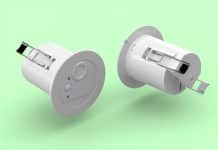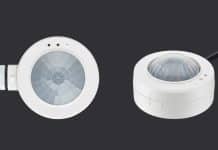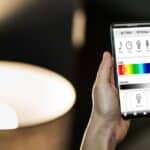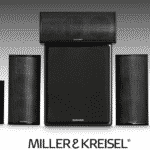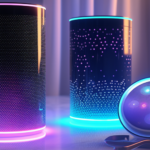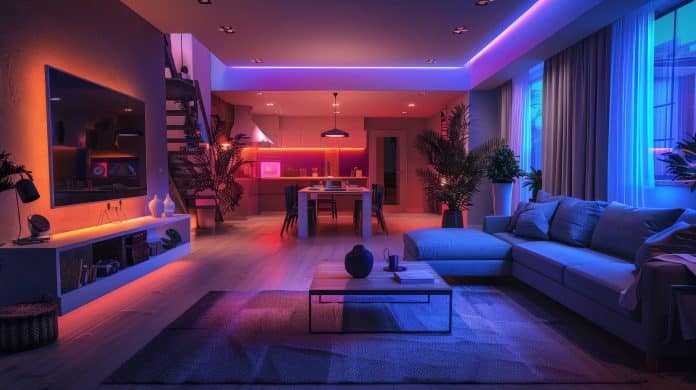
Modern lighting has evolved from a functional necessity to an interactive, intelligent design element, converging wellness, intelligence, and aesthetics. Read what our experts and brand heads have to say about ‘The New Age Lighting Controls 2025’.
Lighting has evolved far beyond mere illumination. What began as a simple utility—turning on a bulb to brighten a space—has transformed into a sophisticated ecosystem of smart, adaptive, and human-centric lighting solutions. Early advancements like dimmers, timers, and programmable controls laid the groundwork, but the real leap came with LEDs, digital connectivity, and networked control protocols.
Today, in 2025, lighting controls are intelligent, interoperable, and deeply integrated into both commercial and residential environments. Protocols like DALI (Digital Addressable Lighting Interface) have become the backbone of precise, scalable control in professional installations, while Casambi’s wireless solutions are empowering designers and integrators to create flexible, app-driven lighting experiences with minimal infrastructure. These systems don’t just light a space—they enhance wellness, optimize energy efficiency, and elevate user experiences, responding dynamically to natural light, occupancy, and user preferences.
India Lighting Market Analysis by Mordor Intelligence
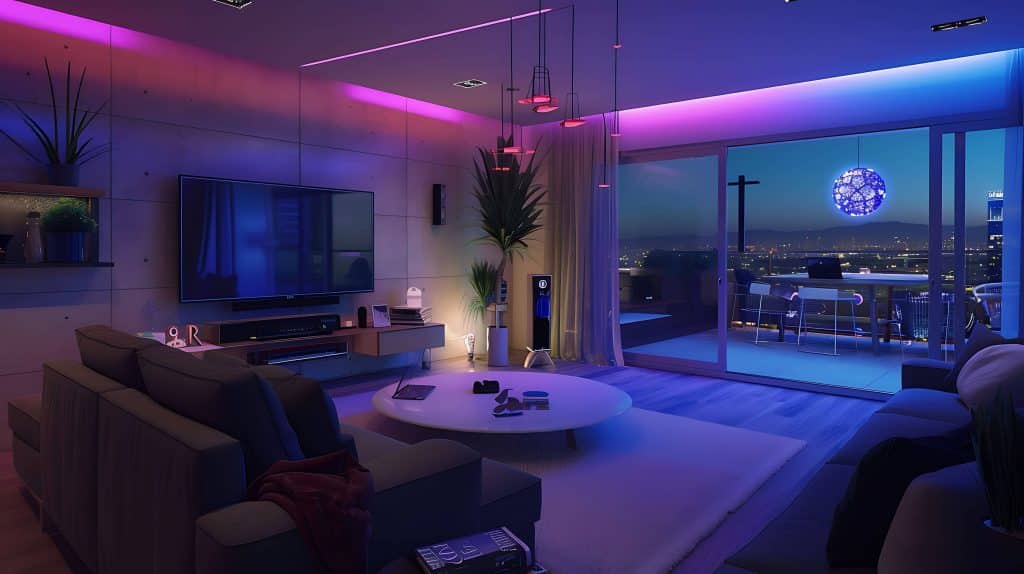
The Indian lighting market size is valued at USD 354.33 million in 2025, and is forecasted to reach USD 596.21 million by 2030, translating into a 10.97% CAGR over the period. Urban infrastructure spending under the Smart Cities Mission, large-scale government procurement of LED bulbs, and mandatory energy-efficiency codes for buildings continue to anchor demand and reduce lifetime ownership costs. Bureau of Energy Efficiency (BEE) star-labeling and Energy Conservation Building Code (ECBC) rules keep shifting buyer preference toward high-performance luminaires, while bulk-tender price erosion has opened mass-market access to LED technology. Competitive intensity remains high as domestic majors, global multinationals, and regional specialists all race to bundle connected-lighting software, predictive-maintenance analytics, and façade-lighting design into turnkey offerings. Export opportunities are also expanding because India now functions as a cost-competitive manufacturing base for the wider Asia-Pacific supply chain and for fast-growing Middle East and Africa projects.
Wellness: Beyond Illumination
The most significant shift in lighting control is its focus on Human-Centric Lighting (HCL). This approach goes beyond simply providing light by mimicking the natural cycle of the sun to support our circadian rhythms.
Circadian Rhythms: Our bodies are hardwired to respond to light. Bright, cool-toned light in the morning boosts alertness and productivity, while warmer, softer light in the evening promotes relaxation and prepares the body for sleep. Modern control systems automate this process, adjusting light colour temperature and intensity throughout the day to optimize mood, energy, and sleep quality.
Health and Safety: Lighting is also being used for specific therapeutic and safety purposes. In healthcare settings, tunable white light can aid patient recovery and staff performance. Furthermore, innovations like antimicrobial LED panels are gaining traction, using specific wavelengths to kill bacteria and viruses in high-traffic areas, contributing to a healthier environment.
Intelligence: The Power of Smart Technology
The convergence of lighting with smart technologies like the Internet of Things (IoT) and Artificial Intelligence (AI) is making lighting systems more responsive and efficient than ever.
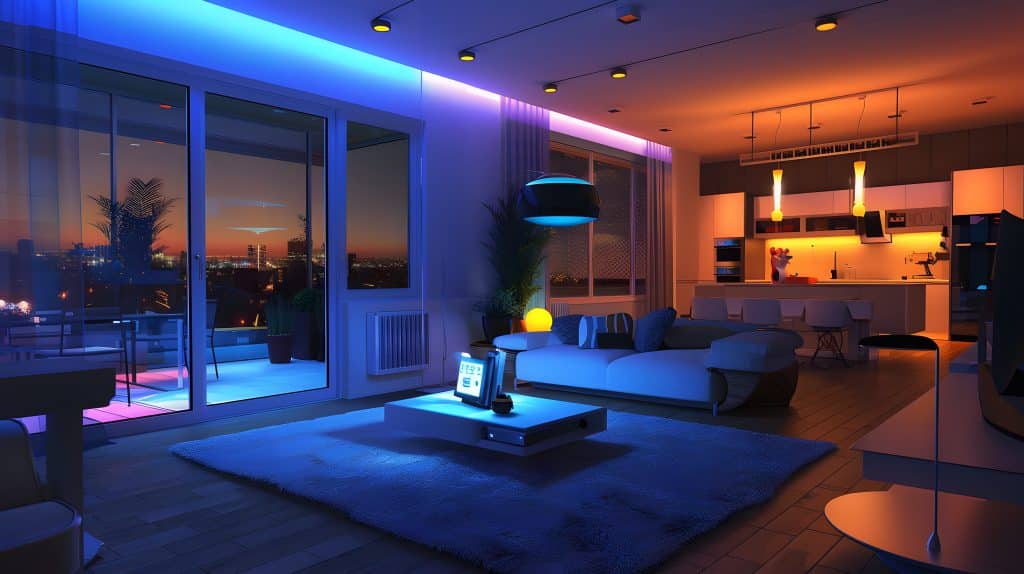
AI and Automation: AI-driven lighting systems learn from user habits and real-time data from sensors. For example, a system can detect when a room is unoccupied and automatically dim or turn OFF the lights to save energy. It can also anticipate needs, like gradually brightening a bedroom in the morning to simulate a sunrise, or adjusting light levels based on the amount of natural daylight streaming through a window.
Seamless Integration: Today’s lighting controls seamlessly integrate with other smart building systems, including security, HVAC, and automated window shades. This allows for unified control and creates “scenes” that respond to a single command. For instance, a “movie night” scene can automatically dim the lights, close the shades, and adjust the thermostat.
Li-Fi Technology: Looking ahead, Li-Fi (Light Fidelity) is an exciting emerging technology that uses LED light waves to transmit data. This could turn lighting fixtures into a secure and fast alternative to Wi-Fi, providing not only illumination but also high-speed internet connectivity.
Design: Redefining Aesthetics and Function
Designers are no longer limited to standard fixtures. Lighting is becoming a core element of architectural and interior design, with innovative solutions that are both functional and artistic.
Minimalist & Invisible Lighting: The trend of “less is more” is reflected in the popularity of minimalist and invisible lighting. Recessed LED strips, linear lighting, and fixtures hidden within walls or ceilings create a clean, uncluttered aesthetic where the light source itself is secondary to the effect it creates.
Dynamic and Sculptural Forms: Conversely, lighting can be the centerpiece of a space. Sculptural and modular lighting systems are gaining prominence, serving as art installations that can be reconfigured and customized. These fixtures create mesmerizing patterns and shadows, transforming a room’s mood and visual identity.
Personalization: The ability to customize is a key design driver. Users can now easily adjust brightness, color, and even patterns through apps or voice commands. This empowers individuals to create the perfect ambiance for any occasion, from a vibrant dinner party to a relaxing evening.
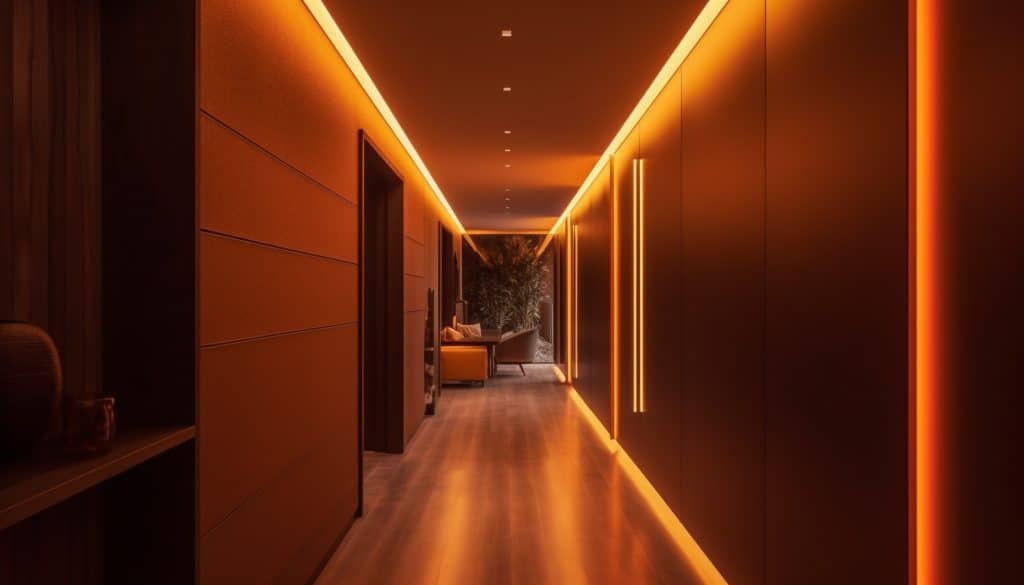
The Role of Professionals in a Connected World
The complexity and sophistication of these new lighting systems underscore the critical role of industry professionals.
Lighting Consultants & Designers: They are the orchestrators, translating a client’s vision into a cohesive, functional, and aesthetically pleasing lighting plan. They select the right fixtures, calculate photometric requirements, and ensure the design balances form and function.
System Integrators & Automation Professionals: These experts are the backbone of the intelligent lighting ecosystem. They are responsible for the technical implementation, programming, and seamless integration of all components. Their expertise ensures that the system works flawlessly and delivers on its promises of efficiency and convenience.
Smart Home World gathers insights from experts across brands and industry segments, offering a comprehensive view of trends, innovations, and best practices shaping the smart home ecosystem.
Tommy Hoo, APAC Strategy & Marketing Leader, Casambi Technologies Pte Ltd

How is your brand integrating wellness-focused technologies such as circadian lighting, tunable white, or AI-driven adaptive control into residential or commercial projects?
At Casambi, wellness is not an afterthought; it is a design principle. Our smart lighting control platform is inherently designed to enable circadian lighting, tunable white, and dynamic scenes that naturally adapt to the rhythms of human life. By embedding intelligence at the software level, Casambi allows residential and commercial projects to implement wellness-focused strategies without complexity.
Increasingly, we are researching AI-driven adaptive controls that analyze behaviour, occupancy, and daylight to create environments that intuitively support comfort, productivity, and health. Casambi provides the platform to empower buildings to think about the people inside them.

What’s your approach to creating lighting systems that are both intelligent and design-conscious — especially in luxury homes or boutique commercial spaces?
Casambi believes true intelligence should feel seamless and invisible. Our ecosystem eliminates the need for intrusive control boxes and complex wiring, giving architects and designers complete freedom to preserve aesthetic integrity. In luxury homes or boutique commercial spaces, this means that lighting can become an extension of the design language — elegant, discreet, and fully integrated into the architecture. Behind the scenes, Casambi ensures powerful functionality: advanced dimming, scene setting, and integration with other smart building systems. We see ourselves as the spatial design enabler, delivering sophistication without visual clutter.
How do you see AI, voice, and sensor-based personalization reshaping user interaction with lighting in the next 2–3 years?
The next wave of innovation will make lighting as intuitive as breathing. AI will continuously learn from daily habits, creating predictive environments rather than reactive ones. Voice control will evolve from simple commands to contextual conversations. At the same time, sensor fusions combining motion, presence, daylight, temperature, and even biometric inputs in the future will allow spaces to tailor themselves dynamically to the individual.

What collaborations or feedback loops do you maintain with lighting designers or integrators to ensure product relevance and ease of installation?
Casambi thrives on collaboration. Our open ecosystem has grown through constant dialogue with lighting designers, specifiers, and integrators worldwide. We maintain structured feedback loops through our Casambi Partners Network, training and certification programs, and dedicated innovation forums. This co-creation process ensures that our platform is not only technologically advanced but also aligned with the daily realities of design, installation, and user experience. This means we are continuously refining our technology to make them more intuitive, interoperable, and adaptable across diverse project contexts.
Can you share an example of a project where your lighting control system significantly impacted energy efficiency, wellness, or visual experience?
One notable example is the BBC in the UK. The BBC’s output reaches more than 400 million people around the world every week, and its TV news operation is the biggest in the world. The organisation wanted to bring the same forward-thinking approach to its buildings, which house numerous TV and radio studios, data centres, and offices.
The BBC was on a mission to reduce energy use, improve comfort for staff, and introduce smarter, more flexible control. All upgrades must achieve energy reductions of at least 20% in order to go ahead, in line with the BBC’s sustainability strategy.

Choosing a Casambi system gave the BBC team access to the entire Casambi Ready ecosystem of thousands of interoperable sensors and control devices. Sensors from Tridonic and Danlers have been installed to enable presence detection and daylight dimming, ensuring lights are only on when they’re needed. Energy-harvesting wireless switches from EnOcean are also being used, which provide another easy way for staff to control the lights. EnOcean’s wireless switches are particularly well-suited to Casambi, because it is the only lighting control system in which they can be paired with the whole network, rather than just the nearest individual node, ensuring reliable commissioning and operation.
Apart from Casambi Ready luminaires, sensors and switches, no other hardware is required to operate and control the new lighting, so installation at all of the BBC locations was quick, simple and cost-effective. The system was commissioned wirelessly from a remote location, meaning there was no need for anyone to be on site, minimising disruption to work. The client is delighted with the results at Broadcasting House. The space has been described as brighter and more vibrant, and all the feedback so far has been positive. The flexibility to adjust light levels at any time means the BBC has been able to easily accommodate staff preferences and requests.
Casambi is now installed in all the following sites, incorporating a total of more than 10,000 nodes: New Broadcasting House, London; Wogan House, London; Energy Centre, London; Mailbox, Birmingham; Glasgow Pacific Quay; Belfast; Manchester Media Centre; BBC Oxford and BBC Radio Nottingham
Khushali, Country Manager, John Cullen Lighting

What are the key challenges in integrating sophisticated lighting controls with broader smart home or building systems (e.g., HVAC, security, energy)?
At John Cullen Lighting, we often work on homes and spaces where lighting is just one element of a much larger smart ecosystem. The main challenge lies in ensuring that the lighting control integrates seamlessly with other systems like HVAC, audio-visual, security, and energy management all of which may be operating on different platforms.
Getting all of these systems to work together harmoniously without compromising performance, design, or user experience requires careful planning and collaboration early in the design process. Another ongoing challenge is ensuring that the control interface remains intuitive for the user. No matter how complex the backend system is, it should always feel simple and seamless at the front end. For us, the goal is to create a system that’s not only functional but also beautifully invisible.

How has your role evolved as clients and designers now expect more wellness-focused and aesthetically subtle lighting solutions?
Over the years, our role has evolved from being lighting designers to experience creators. Today’s clients are far more conscious of the impact of lighting on well-being, from mood and sleep to productivity and relaxation. They’re not just asking for light. They’re asking for the right light, at the right time, often without seeing the source at all.
At John Cullen, our design philosophy has always been rooted in layering light and using discreet architectural luminaires. Pair this with tunable solutions and adaptive control systems, and you create a holistic environment where lighting fulfills function, emotional comfort, and visual elegance. Clients can adapt their spaces to mimic the cycles of natural light throughout the day, and therefore support the body’s circadian rhythm, or even simply adjust depending on their mood and needs at any given time. For instance, if someone is completing a task or working from home, a cooler light would be most suitable, and when they’re ready to relax and settle in for the evening, adjusting to a warmer tone is easily achievable. Flexibility has always been and continues to be one of the biggest drivers when it comes to wellness-focused spaces; the technology to achieve that evolves, and it’s up to us to stay on top of the latest possibilities.
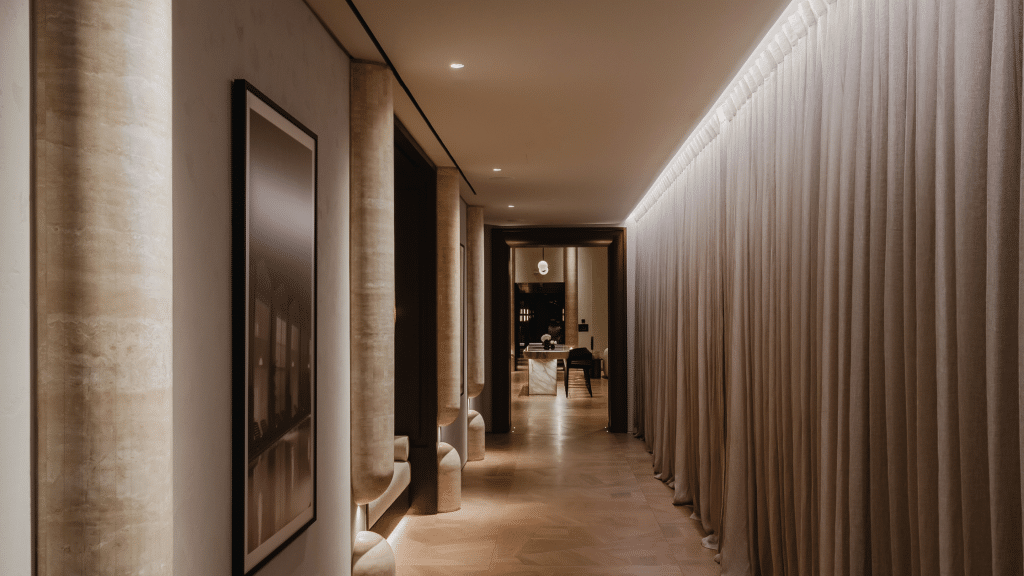
What are your go-to platforms or protocols for ensuring reliable and future-ready lighting control integration (KNX, DALI, BLE, etc.)?
Client needs are always first and foremost, and we can recommend the best options to suit the scale and scope of any project. We tend to gravitate towards the likes of Lutron and KNX, the former offering a user-friendly and refined interface with excellent support for layered lighting scenes, and the latter being especially powerful when multiple systems need to communicate reliably. DALI also plays a key role in projects that require granular dimming and flexibility, especially when we want individual control over fittings. We often work in tandem with system operators to select the best protocol mix depending on the architectural needs, integration demands, and the desired user experience.
Can you share a recent project where invisible lighting design or adaptive control created a standout user experience?
One of our recent private residential projects in the UK perfectly reflects the power of invisible lighting and adaptive control. The client wanted a calming, luxurious interior where lighting would enhance the space subtly rather than take centre stage. We used a mix of low-glare downlights, floor washers, and hidden linear details, all controlled by a system that adapted to time of day and ambient conditions.
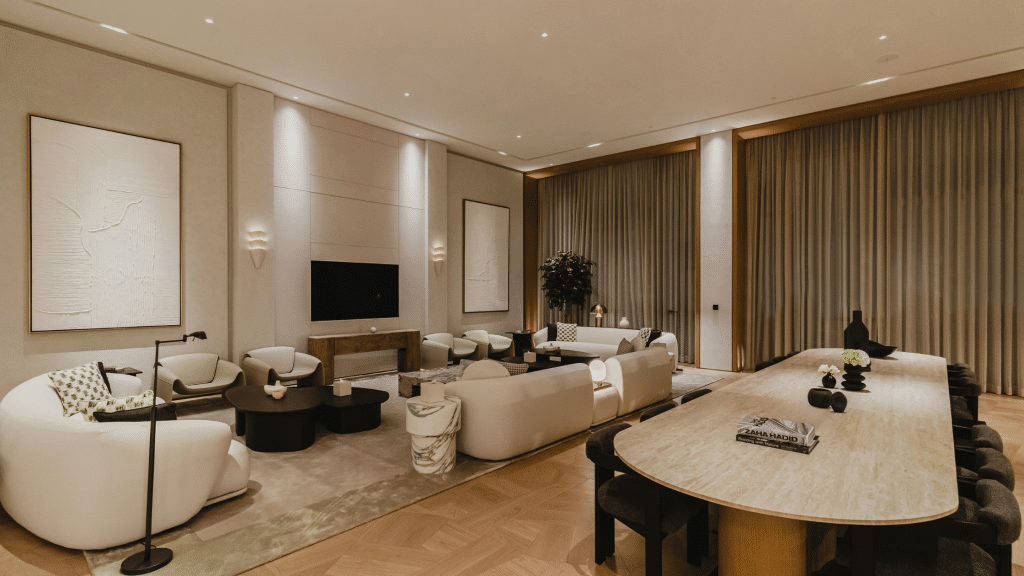
By integrating tunable white lighting with automation, the home transitioned naturally from cooler, energising tones in the morning to warmer, restful lighting in the evening. At night, low-level pathway lights activated automatically, offering soft guidance without waking the senses. The result? A space that didn’t just look beautiful, it felt beautifully in sync with the rhythm of daily life.
With the rise of AI and predictive automation, how do you see system integrators redefining lighting control delivery and user education?
AI is unlocking a new chapter in lighting control where systems don’t just respond to commands but learn from behaviour. We see this as a major step forward in creating homes that adapt intuitively to people’s lifestyles.
System integrators now play a more strategic role, working with lighting designers & product suppliers like us to fine-tune controls that anticipate the user’s needs rather than rely on presets. These AI-enhanced systems can adjust scenes automatically based on time of day, occupancy, or even the weather, reducing the need for manual inputs.

From a user education perspective, the focus is shifting toward simplicity. While the backend may be smart and complex, the interface must be intuitive. We often see users appreciating systems that “just work,” without needing deep technical knowledge. The role of the integrator is to make that complexity invisible and the experience effortless.
Raja Mukherjee, Sr VP & BU Head- Lighting, PEWIN, Panasonic Life Solutions India
How is your brand integrating wellness-focused technologies such as circadian lighting, tunable white, or AI-driven adaptive control into residential or commercial projects?
Our brand is deeply committed to enhancing occupant wellness through advanced lighting technologies. We integrate circadian lighting systems that mimic natural daylight patterns, supporting healthier sleep-wake cycles and overall well-being. Our tunable white solutions allow users to adjust colour temperature and intensity, creating environments that promote focus, relaxation, or energy as needed. Additionally, our AI-driven adaptive controls analyse occupancy patterns, daylight availability, and user preferences to automatically optimize lighting for both comfort and energy efficiency—whether in homes, offices, or hospitality spaces.
What’s your approach to creating lighting systems that are both intelligent and design-conscious—especially in luxury homes or boutique commercial spaces?
We believe that intelligent lighting should never compromise on aesthetics. Our approach combines cutting-edge control technology with design flexibility, offering sleek interfaces, customizable scenes, and seamless integration with architectural elements. In luxury homes and boutique commercial spaces, we collaborate closely with designers and architects to ensure our systems complement the interior vision, delivering intuitive control, mood-setting capabilities, and invisible hardware that enhances the overall ambiance.
How do you see AI, voice, and sensor-based personalization reshaping user interaction with lighting in the next 2–3 years?
AI, voice, and sensor-based personalization are set to revolutionize user interaction with lighting. We foresee lighting systems that learn from user behavior, anticipate needs, and adjust automatically, creating truly personalized environments. Voice assistants will enable hands-free control, while advanced sensors will detect occupancy, daylight, and even emotional cues to tailor lighting in real time. This convergence will make lighting more intuitive, accessible, and responsive, elevating both comfort and energy savings.
What collaborations or feedback loops do you maintain with lighting designers or integrators to ensure product relevance and ease of installation?
Collaboration is at the heart of our innovation process. We maintain ongoing dialogues with lighting designers, system integrators, and end-users through workshops, pilot projects, and feedback sessions. Their insights directly inform our product development ensuring our solutions are not only technologically advanced but also practical to install and easy to use. We also provide comprehensive training and support to our partners, fostering a community of expertise and continuous improvement.
Can you share an example of a project where your lighting control system significantly impacted energy efficiency, wellness, or visual experience?
Indoor – We have installed our lighting controls in the new Parliament building, with daylight sensors supporting daylight harvesting, occupancy sensors in cabins, time schedulers, etc, on which we are able to save around 10-15% of energy, and giving flexibility to create customized lighting ambiance. Likewise, we have done DY Patil Hotel Management Institute, Varanasi Convention Centre, Pune Metro, and the DRM building in Howrah. We have also bagged the orders for the C4 & C6 package covering 5 stations for the most prestigious and high-visibility Mumbai – Ahmedabad High Speed Rail Corridor Project (Bullet Train Project ).
Outdoor – we have implemented 28k pieces of smart streetlighting at the Kalyan Dombivli area through the Kalyan Dombivli Municipal Corporation, wherein the corporation has saved over 12 cr of money in the last 3 years.
Ritesh Shah, Lux Light Designs, Principal Lighting Designer & Consultant
How has the focus on human-centric and wellness-driven lighting changed your design approach over the last few years?
As a lighting designer, the growing focus on human-centric and wellness-driven lighting has deeply reshaped how I approach every project.
Lighting is no longer just about form and function; it’s about enhancing human experience. This shift has made my role more collaborative and essential early in the design process. I now work closely with architects, interior designers and system integrators to ensure that lighting supports circadian rhythms, mood, productivity and overall well-being.
It has also pushed me to think beyond aesthetics, carefully considering colour temperature, light distribution, glare control, and dynamic lighting scenes that adapt throughout the day. The aim is to create environments where occupants feel more balanced, energized and connected to natural rhythms.
In short, wellness-driven lighting has elevated the role of the lighting designer from a visual stylist to a key contributor in shaping healthier and more responsive spaces.
This holistic approach has also deepened our commitment to aesthetics and user experience. We’re not just lighting spaces we’re enhancing the quality of life within them.
Which brands or technologies have impressed you in terms of balancing aesthetics with functionality and control?
Several brands have made impressive strides in balancing aesthetics with functionality and smart control.
Wipro & Havells Lighting stand out with their human-centric and IoT-enabled systems that blend seamlessly into modern spaces, which have brought sleek, affordable smart lighting to the mainstream, offering app and voice-controlled options.
Technology platforms like Casambi, Schneider Electric, and Helvar automation systems are bringing elegant, user-friendly control solutions to Indian homes and businesses.
It’s exciting to see Indian innovation aligning global functionality with local design sensibilities.
In real-world projects, how have advanced lighting controls (e.g., adaptive brightness, automated scheduling, AI) contributed to client wellness or lifestyle enhancement?
In real-world projects, advanced lighting controls have significantly elevated both client wellness and lifestyle quality.
Features like adaptive brightness help maintain circadian rhythm by adjusting light levels throughout the day, promoting better sleep and increased daytime alertness, especially in residential and wellness-focused spaces. Automated scheduling has enhanced convenience and energy efficiency, while also creating mood-driven environments tailored to the client’s routine.
In high-end homes and hospitality projects, AI-powered systems have enabled personalized lighting scenes that respond to occupancy, time of day, or even emotional states, contributing to both comfort and emotional well-being.
Ultimately, these technologies are not just about automation; they’re about creating responsive, health-supportive environments that adapt to how people live and feel.
Do you find enough collaboration opportunities with system integrators or tech brands early in the design phase? What needs to improve?
As a lighting designer, I often find that collaboration with system integrators and tech brands comes too late in the process.
While there’s growing awareness of the value of integrated design, we’re still not seeing enough early-stage involvement from tech partners. When collaboration happens from the outset during concept development, it leads to far more cohesive outcomes. Lighting, controls, and user experience align seamlessly, without last-minute compromises.
What needs to improve is timing and communication. System integrators should be part of the design dialogue from day one, not just during installation. This early integration allows us to craft lighting experiences that are not only visually impactful but also intuitive, efficient, and wellness-driven.
Ultimately, better collaboration up front means smarter design and a better result for the client.
What’s your vision for the future of lighting design — particularly in how it merges with architecture, automation, and sustainable living?
The future of lighting design depends heavily on its early integration into the architectural process and that starts with appointing a lighting designer from day one.
Lighting will no longer be treated as a layer applied after design; it will be embedded into architecture structurally, emotionally, and experientially. We’re moving toward invisible light sources, dynamic materials, and adaptive lighting environments that respond to both people and place.
Automation and AI will play a crucial role, enabling lighting systems that are intelligent, responsive, and personalized—automatically adjusting to time of day, occupancy, mood, or even energy grid demands. This kind of synergy between technology and design will transform how we experience spaces.
At the same time, sustainability will drive every decision—from energy-efficient fixtures and controls to material choices and lifecycle impact. The goal is not just to reduce consumption but to create healthier, more resilient spaces that support human well-being and environmental responsibility.
In essence, lighting design will evolve into a seamless, sustainable, and human-centric discipline where architecture, automation, and wellness truly converge.
Appointing a lighting designer is no longer optional; it’s essential to achieving smart, sustainable, and human-centric environments.
Conclusion:
Lighting control in 2025 is an intersection of human needs, technological advancements, and creative expression. It’s a field where wellness, intelligence, and design are no longer separate concepts but a unified force, illuminating a more connected and comfortable future.




